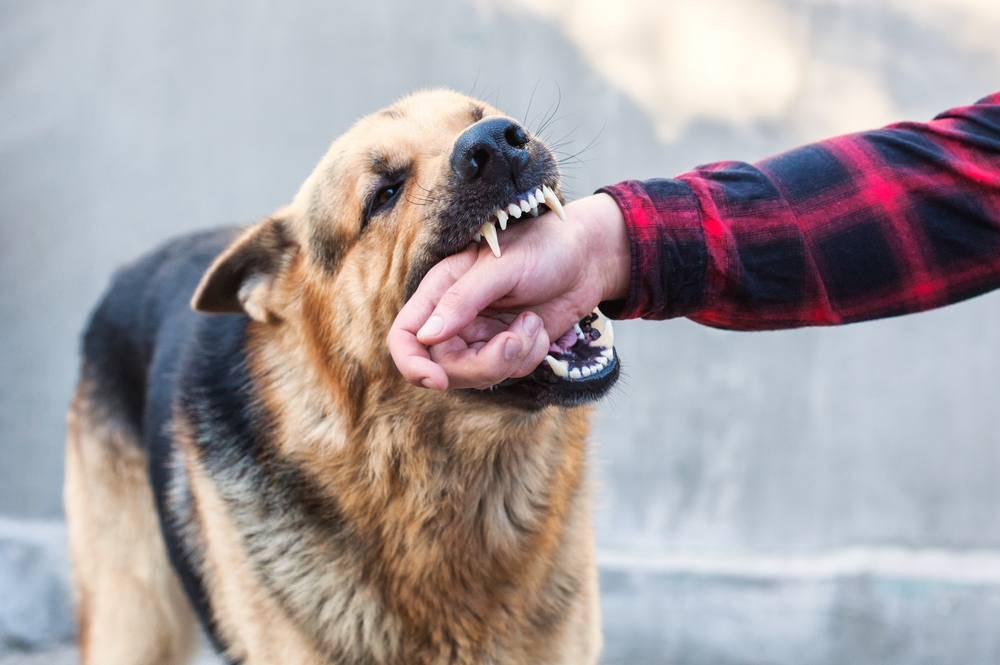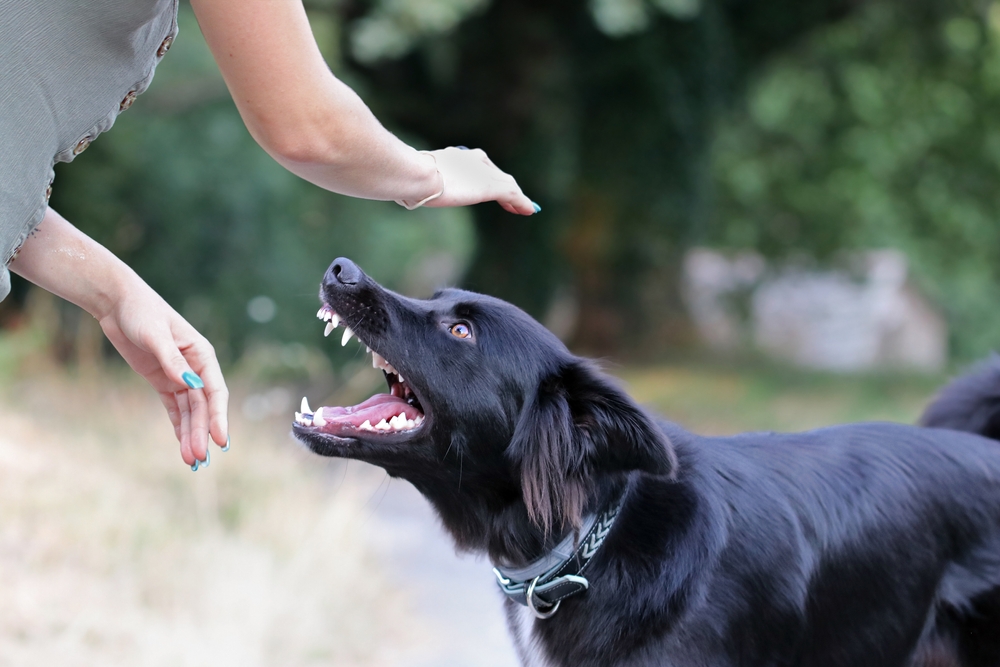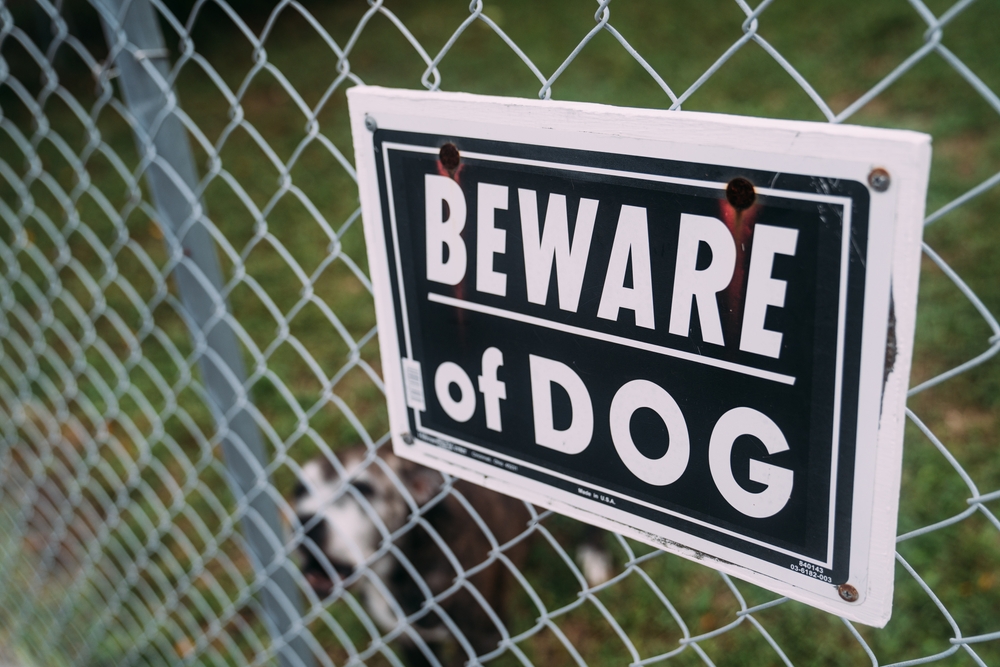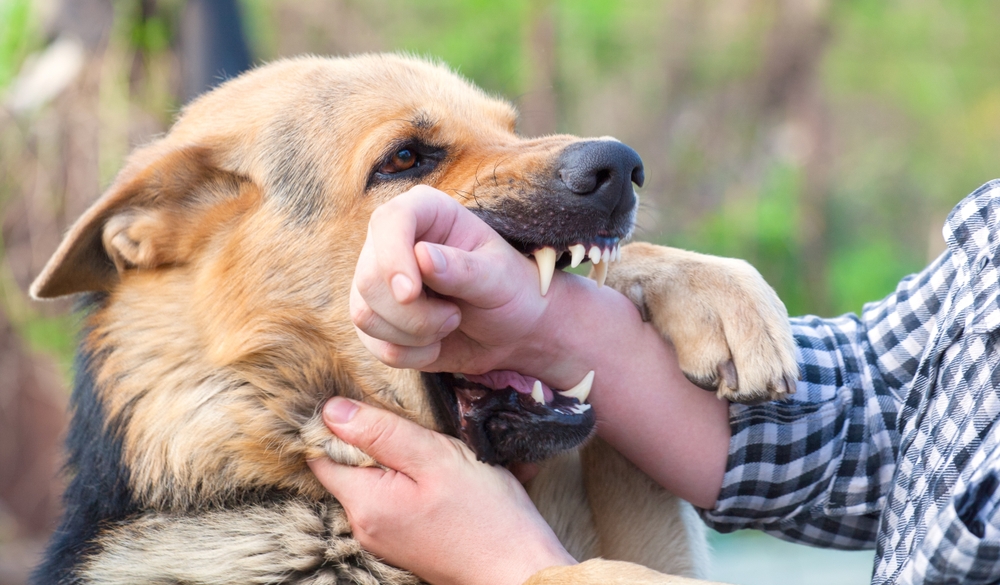
Under Texas law, a “dangerous dog” is one that makes an unprovoked attack on a person that causes bodily injury in a place other than its own secure enclosure. These specific Texas dangerous dog laws exist to protect the public and hold owners accountable when their animals cause harm.
If you or a loved one was bitten or seriously injured by a dog, an experienced dog bite lawyer can help you understand your legal options. With the right representation, you can pursue compensation for the physical, emotional, and financial toll of the attack while holding the negligent owner responsible.
Key Takeaways about Dangerous Dog Laws in Texas
- Texas law defines a “dangerous dog” based on its actions, specifically an unprovoked attack causing bodily injury outside of its secure enclosure.
- The state follows a “one-bite rule,” which means an owner can be held liable if they knew or should have known about their dog’s aggressive tendencies.
- Dog owners can also be held responsible for injuries if their negligence, such as violating local leash laws in Tarrant County, directly leads to an attack.
- Individuals injured by a dog may be able to pursue compensation for medical expenses, lost income, pain and suffering, and other related damages.
- Reporting a dog bite to local authorities, like Arlington Animal Services, is a critical step in creating an official record and preventing future incidents.
Understanding the Legal Definition of a “Dangerous Dog” in Texas

When we talk about Texas’s dangerous dog laws, it’s important to know what the state legally considers “dangerous.” It isn’t about the breed or the size of the dog, but about its specific behavior. The official definition is laid out in the Texas Health and Safety Code, Chapter 822.
According to the law, a dog is declared dangerous if it:
- Makes an unprovoked attack on a person that causes bodily injury, and that attack occurs in a place other than a secure enclosure where the dog is kept.
- Commits unprovoked acts in a place other than its secure enclosure that cause a person to reasonably believe the dog will attack and cause bodily injury.
This legal language simply means that if a dog attacks someone without being provoked and injures them somewhere like a public park, a sidewalk, or a neighbor’s yard, it can be legally classified as dangerous. The key terms here are “unprovoked” and “bodily injury,” which can range from scratches and bruises to more severe wounds.
The “One-Bite Rule” in Texas: What It Really Means
You may have heard people talk about a “one-bite rule” in Texas. This is a common term, but it can be misleading. It doesn’t mean a dog gets one “free” bite before the owner is responsible. Instead, it refers to a legal concept centered on the owner’s knowledge of the dog’s potential to be aggressive.
To hold an owner responsible for a dog bite under this rule, you generally need to show that the owner knew or reasonably should have known that their dog had acted aggressively or had a tendency to bite. This is a form of negligence, a legal term meaning that someone failed to use reasonable care, and that failure resulted in harm to another person.
Evidence that an owner was aware of their dog’s dangerous tendencies could include:
- The dog has bitten or attacked someone before.
- The dog frequently growls, snarls, or lunges at people.
- The owner has told others that their dog is aggressive or might bite.
Proving what an owner knew can be challenging, which is why documenting everything after an incident is so crucial. However, the one-bite rule is not the only path to holding an owner accountable for the harm their dog has caused.
When is a Dog Owner Held Responsible for an Attack?

Beyond the one-bite rule, there are other situations where a dog owner can be held liable for an injury caused by their animal. These often involve direct negligence, where an owner’s careless actions directly led to the attack.
A common example is when an owner violates a local ordinance. For instance, both the City of Arlington and Tarrant County have leash laws that require dogs to be restrained when in public spaces. If an owner lets their dog run loose in a place like River Legacy Parks and it attacks someone, the owner could be held automatically responsible. This is a legal principle called negligence per se, which means the negligence is assumed because the person violated a law designed to protect public safety.
An owner could be held responsible in several scenarios, including:
- Known Aggression: The owner was aware of the dog’s history of aggression but failed to take proper precautions to protect others.
- Leash Law Violations: The owner allowed the dog to be off-leash in an area where leashes are required by local Arlington or Tarrant County ordinances.
- Failure to Secure: The owner did not properly secure the dog on their property, allowing it to escape through a broken fence or an open gate and injure someone.
These situations demonstrate a failure on the owner’s part to act responsibly, and the law provides a way to hold them accountable for the consequences of that failure.
Practical Steps to Take After a Dog Bite Incident
Once you have received initial medical care, taking a few organized steps can protect your health and your legal rights. This is not about assigning blame in the moment but about creating a clear record of what happened.
Consider taking the following actions:
- Gather Information: If possible, get the dog owner’s name, address, and phone number. Also, collect contact information from anyone who witnessed the attack. Their account of what happened can be very helpful later on.
- Document Everything: Take clear photos of your injuries as soon as you can, and continue to take pictures throughout the healing process. Also, take photos of the location where the attack occurred. Keep all medical records, bills, and receipts related to your treatment.
- Report the Bite: Contact your local animal control agency to file an official report. In our area, this would be Arlington Animal Services or Tarrant County Public Health. An official report creates a legal record of the incident and can help prevent the dog from harming someone else in the future.
- Keep a Journal: Write down everything you remember about the attack. In the following days and weeks, keep a journal detailing your physical pain, emotional state, and any daily activities you are unable to do because of your injuries.
Taking these steps provides a solid foundation of evidence and documentation, which is vital if you decide to pursue a claim for your injuries.
What Kind of Compensation Can Be Pursued After a Dog Attack?

A serious dog bite can have a ripple effect on your entire life. It’s not just the immediate pain and the trip to the emergency room; it’s the ongoing medical care, the time missed from work, and the emotional trauma that can linger long after the physical wounds have healed.
When you pursue a personal injury claim, you are seeking compensation for these losses, which are referred to as “damages” in the legal world. The goal is to help make you financially whole again after an event that was not your fault.
Compensation in a dog bite case can cover several types of damages:
- Medical Expenses: This includes everything from the initial emergency room visit and stitches to future costs for things like physical therapy or plastic surgery to reduce scarring.
- Lost Wages or Income: If your injuries prevent you from working, you can seek compensation for the income you have lost and may lose in the future.
- Pain and Suffering: This accounts for the physical pain and emotional distress you have experienced as a result of the attack.
- Scarring and Disfigurement: Permanent scars, especially on the face or other visible areas, can have a profound impact on a person’s self-esteem and quality of life.
- Mental Anguish: This addresses the psychological trauma, such as anxiety, depression, or post-traumatic stress disorder (PTSD), that can develop after a frightening attack.
Every case is unique, and the amount of compensation depends on the severity of the injuries and the specific impact the attack has had on your life.
Special Considerations for Children and Dog Bites
It is a heartbreaking reality that children are often the ones most seriously injured by dog bites. Because of their smaller size, a child is more likely to be bitten on the head, face, or neck. The emotional impact of an attack can also be devastating for a child, leading to a lifelong fear of dogs and significant emotional trauma.
The law recognizes that children are more vulnerable and may not understand the risks of approaching an unfamiliar animal. In Texas, the legal standards can be different when a child is injured. For instance:
- A child may not be considered a “trespasser” in the same way an adult would be, especially if something on the property (like a toy or a swing set) attracted them.
- The psychological trauma a child suffers is given significant weight, as it can affect their development and well-being for years to come.
When a child is the one who has been hurt, the focus is squarely on their complete recovery, both physically and emotionally.
The Legal Process with Texas Dangerous Dog Laws
If you’re dealing with a dog bite, you’re also likely worrying about medical bills and how to handle the dog owner and their insurance company. This is where a personal injury attorney can provide guidance and support.
An attorney’s role is to handle the legal details so you can focus on your recovery. This often involves:
- Investigating the Incident: Gathering police reports, animal control records, witness statements, and evidence of the dog’s aggressive history.
- Communicating with Insurance Companies: Insurance adjusters are trained to minimize payouts. An attorney can handle all communications and negotiations on your behalf to protect your rights.
- Building Your Case: Compiling medical records and expert opinions to demonstrate the full extent of your injuries and the financial impact on your life.
- Advocating for You: Working to reach a fair settlement that covers all your damages or, if necessary, representing you in court.
You shouldn’t have to figure out dangerous dog laws on your own. Having a dedicated advocate in your corner ensures that your voice is heard and you are treated fairly throughout the entire process.
Texas Dangerous Dog Laws FAQs
Here are answers to some common questions people have about dangerous dog laws in Texas.
Generally, a property owner has a reduced duty of care to a trespasser. However, there are exceptions, especially if the trespasser is a child or if the owner created an intentional hazard. The circumstances of why the person was on the property are very important, and the law can be complex in these situations.
This can make recovering compensation more difficult, but it is not impossible. An investigation may reveal other assets the owner has that could be used to cover your damages. An attorney can help explore all possible avenues for financial recovery, even in the absence of a relevant insurance policy.
In Texas, the statute of limitations for personal injury claims is generally two years from the date of the injury. This is a strict deadline, and if you fail to file a lawsuit within that time, you will likely lose your right to pursue compensation. It is important to act promptly to preserve your legal options.
No. Texas state law does not label specific breeds as inherently dangerous. The determination is based entirely on the individual dog’s behavior and actions, not its breed. However, some apartment complexes or city ordinances may have their own restrictions on certain breeds.
Contact Branch & Dhillon, P.C. for a Free Consultation

At Branch & Dhillon, P.C., our dedicated personal injury attorneys are passionate about fighting for the rights of people in Arlington and throughout Tarrant County. We understand the physical and emotional pain you are going through, and we are here to handle the legal burdens for you.
Our personal injury lawyers work on a contingency fee basis, which means you pay absolutely no upfront costs. We only get paid if we successfully recover compensation for you. Let us focus on the law while you focus on healing. Contact us today at (817) 533-3430 or through our online form for a free, no-obligation consultation to discuss your case and learn how we can help.

